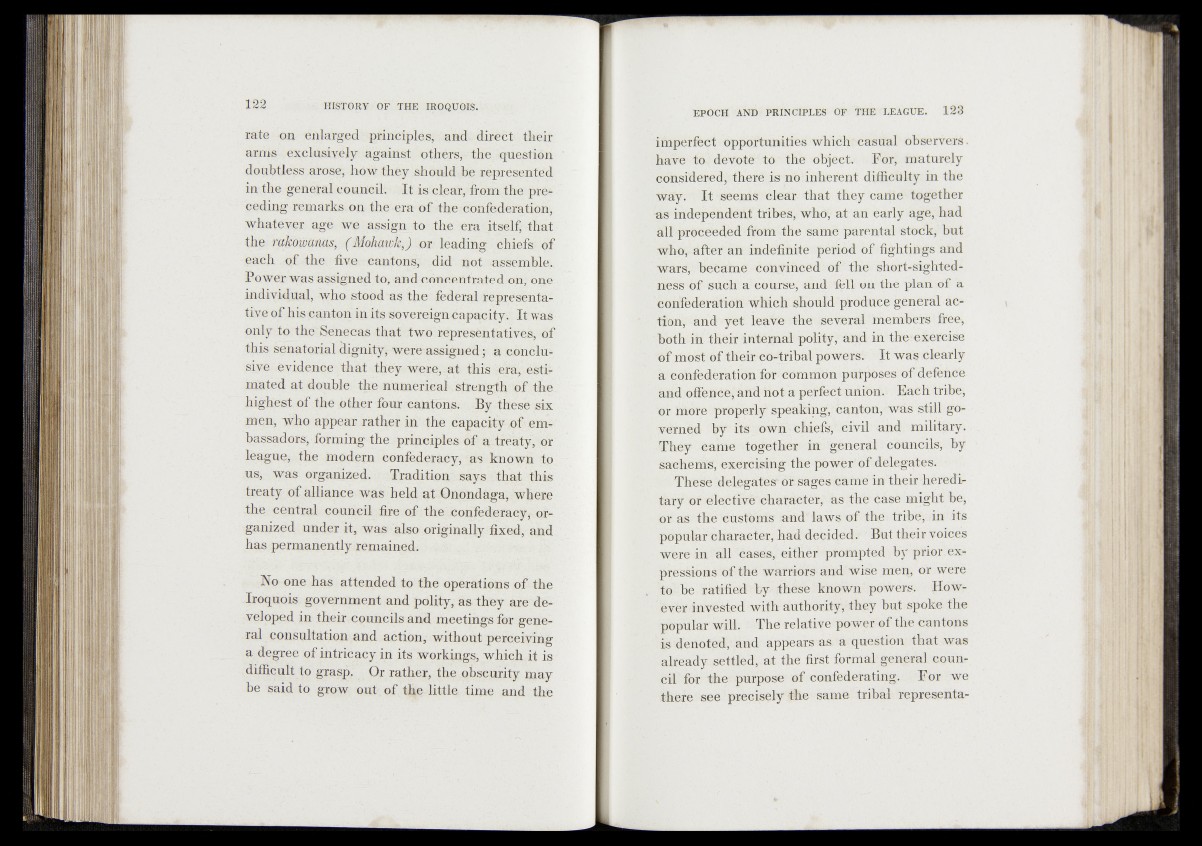
rate: on enlarged principles, and direct their
arms others*- the .question
dondtleSs:arose, how they should be represented
in the general eouneil. It is clear, from the preceding
remarks, on the era of the ^confederation,
whatever age we assign to the era itself’ that
the rakowanas, (Mohawk^) nr. leading chiefs; of
each of the five cantons, did not .'assemble..
Power was assigned to, and concentrated on, one
inilyidiial, who stood as the federal representative
of his canton in its sovereigncapacity. It was
only to the- Senecas that two representatives, of
this senatorial dignityrwere assigned; a conclusive
evidence that they wore,.at this era, estir
mated at double the numerical. strength of the.
highest of the other four cantons. By these-six
men, who appear rather in the capacity of embassadors,
forming the principles of a treaty, or
league, the modern confederacy, as known to
us,, was organized. Tradition says that this
treaty of alliance was held at Onondaga, where
the central council fire of the confederacy^ organized
under it, was also originally fixed, and
has permanently remained.
No one has attended to the operations of the
Iroquois government and polity, as. they are developed
in their councils and meetings for general
consultation and action, without perceiving
a degree of intricacy in its workings, which it is
difficult to grasp, Or rather, the qkscurity may
be said to grow out of the little time and the
imperfect opportunities which;casual observers,
have to deVotetothe object. For, maturely
considered, there is no inherent difficulty in the
way. It seems clear that they came together
-as independent tribes, whdy at an early age, had
all proceeded from the same parental stock, but
whoy after an indefinite period of fightings and
wars, became convinced of the short-sightedness
of such a course, and fell on the plan of a
confederation which should produce general action,
and yet leave the several' members free,
both in their internal polity, and in the-exercise
of most of their co-tribal powers^.- It was clearly
a confederation for common purposes of-defence
_and offencfe^ and no tm perfect union. Each tribe,
or more -properly speaking,;® antan, was still governed
by iti own chiefs/ civil and military.
They came together in general councils, by
sachems", exercising the power of delegates. |
These 'delegatesmr sages came in their hereditary
or elective' character, as the case might he,
or as the’customs mad*'laws of the. tribe, in its
popular character, had decided.- But their voices
were .in all cases,'either prompted by prior expressions
of the warriors and wise men, or were
to he ratified by these known powers. However
invested with authority^ they but spoke, the
popular will. The relative'power ©f the cantons
is denoted, and appearsmsya question' that was
already .settled, at the first formal-general council
for the purpose of eonfedeTating. For we
there see precisely #ie same tribal Fepresenta